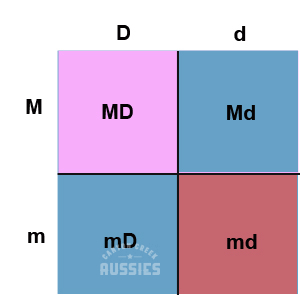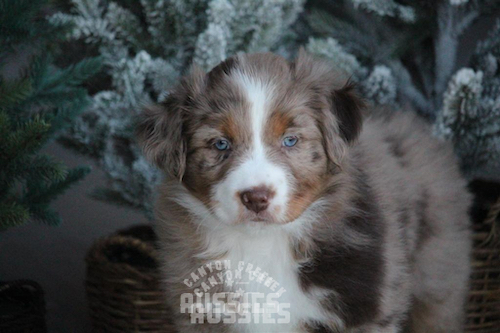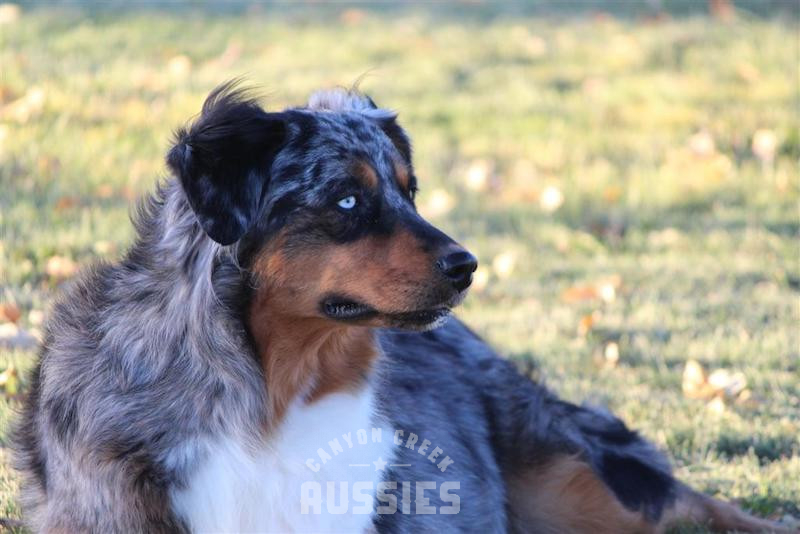What is MDR1 AND How Does It Affect My Australian Shepherd?
We get so many questions regarding MDR1 that we decided to shed some light on this topic to help our fellow dog owners understand more about the MDR1 gene and how it affects the Australian Shepherd breed.
MDR1, also known as MultiDrug Resistance Mutation (MDR1) is a change or mutation in an animals genetic code (in this case dogs). This gene mutation is most common in herding dogs like Collies and Australian Shepherds. The mutation of this particular gene in these kinds of dogs causes them to become more sensitive to certain drugs.
Ivermectin is a very common “anti-parasitic” drug that is given to most dogs. Without getting over scientific, when a dog is more sensitive to a drug, it means that when they are given the normal dose of the drug, Ivermectin (for example), it can have neurological effects on dogs with the mutated gene MDR1 because the gene allows for higher levels of the drug to enter the body.
Normal dogs without the mutation can accept higher doses because the body won’t allow toxic levels to enter the body.
At lower doses, all dogs are generally just fine, even with the mutation. However, in some cases, in order to control certain parasites, higher doses may be required and this is why it’s important to know if your dog has 2 copies of the mutated MDR1 gene so your vet can treat your dog differently.
How does a dog get the mutated MDR1 gene?
The mutated MDR1 gene is given to a dog by it’s parent(s) if they are a carrier. When a puppy is born, each parent will give a copy of the MDR1 gene to its offspring. If 1 parent has a copy of the mutated MDR1 gene, 50% of the offspring will inherit 1 copy of the mutated MDR1 gene. In order for a dog to be at high risk for toxicity, the dog must carry 2 copies of the MDR1 gene.
To inherit 2 copies of the MDR1 mutation, both mom and dad must carry the mutation, and even then, only 25% of the offspring will carry 2 copies. A dog with 2 copies of the MDR1 gene is at high risk if given high doses of certain drugs.
To show how this works, it’s easiest to draw a punnett square.
Mm – Mom with 1 copy of the mutated MDR1 gene – normal/mutation (n/m)
DD – Dad with 0 copies of the mutated MDR1 gene – normal/normal (n/n)

In this example, only the mom carries 1 copy of the mutant gene (m). The squares represent the offspring of the parents, and as you can see, the small (m) or blue squares each carry 1 copy of the MDR1 mutated gene inherited from the mother. The other half of the litter or pink squares do not carry any copies of the mutated gene.
Now let’s look at an example where both parents carry a copy of the MDR1 mutated gene.
If both parents carry a copy of the mutated MDR1 gene, 50% of the offspring will inherit 1 copy (blue squares) of the mutated MDR1 gene. 25% of the pups will inherit 2 copies (red square) of the mutated gene and 25% will have 0 copies (pink square) of the mutation. Again, easier to show in a punnett square.
Mm – Mom with 1 copy of the mutated MDR1 gene – normal/mutation (n/m)
Dd – Dad with 1 copy of the mutated MDR1 gene – normal/mutation (n/m)

The effects of the mutation will vary depending on how many copies of the mutated MDR1 gene is inherited. 1 copy obviously won’t be as strong as 2 copies. With 1 copy, the body will still be able to remove any unhealthy levels of drugs in the body. In a breeding program, this is why each dog is genetically tested to see if they are MDR1 carriers and how many copies they have. Not knowing if the parents are carriers of the mutation increases the risk of possible side effects to the offspring when given those drugs. We simply choose to avoid giving Ivermectin to our dogs even if they are not carriers because the alternative drug works just as good and doesn’t have the side effects.
 A dog with 2 copies of the mutated gene will act and behave just like any other Australian Shepherd. You wouldn’t even know they had it unless they are tested for it.
A dog with 2 copies of the mutated gene will act and behave just like any other Australian Shepherd. You wouldn’t even know they had it unless they are tested for it.
If a dog has 2 copies of the MDR1 mutated gene, all this means is that they shouldn’t be given high dosages of certain drugs (Ivermectin specifically) because this mutation allows the body to be less resistant when it reacts to the drug. In other words, if it’s less resistant, more of the drug can enter the body/brain of your dog, which can be harmful, so you can’t give them as much.
Knowing this and letting your vet know this is important because they can still treat for parasites and other diseases, they just give them smaller doses or your vet will treat them with a different drug and they are usually just fine. Not knowing that your dog has 2 mutated copies and then giving your dog the “normal” dose, that’s when it can cause problems. Again, we treat all of the dogs like they are affected. Whether they are clear, have one copy or two.
As a breeder, this is important to know and also understand because we don’t want problems that could have easily been avoided down the road. (Even though a dog with 2 copies of the mutated gene can be managed by your Vet, and are usually just fine, we prefer not to deal with it, if it can be prevented.)
After all the research we’ve done, studies we’ve read and professionals we’ve talked to, the majority of dogs with just 1 copy of the mutated MDR1 gene are just fine because they still have a clear copy. We test all of our dogs for the mutation and we are very transparent in showing if they have it or not.
At the end of the day we believe you treat all dogs as if they have two copies of MDR1 (affected) because there are known cases of dogs that were clear (zero copies) that still had a very harsh reaction to Ivermectin.
How do I test for the MDR1 mutation?
The best way to test if your dog has the MDR1 mutation is through a blood test. Most local vets can test for the mutation. It’s a simple test that doesn’t take very long.
You can also order a cheek swab kit from Paw Print Genetics and perform a simple cheek swab to test for the MDR1 mutation.
We hope this has shed some light on what is MDR1 and how it may affect your Australian Shepherd.
Let us know if you have any questions in the comments below.


Good to know!
What type of neurological disorders are exhibited? Examples please.
There can be many signs… Most common is how your dog is acting. They could look like they are dizzy or stumbling. Or even walking funny or different than normal. They could also seem very agitated. It’s possible they could have seziures as well.